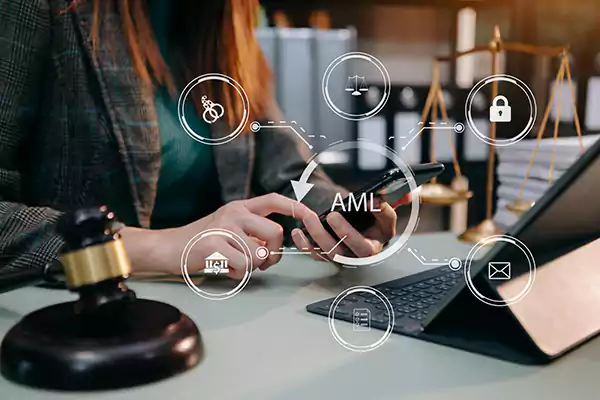With the constant influx of technology, money laundering continues to disrupt the economy worldwide. And, the amount of laundered is around $800 billion – $2 trillion of Global GDP. Money launders are now developing more sophisticated ways to gather funds illegally. However, to cope with this problem financial institutions should opt for anti-money laundering check to provide high-quality work.

With fintech companies witnessing stringent rules for the execution of transactions, the main goal is to combat money laundering and fraud. For businesses to care about reputation and quality service must counter illegal activities. Consequently, the AML verification program is developed by addressing current standard codes and requirements. Therefore, enterprises must know what is an aml check and get permitted to use available tools accurately.
In this article, you can overview fruitful ways to combat money laundering in financial sectors, and why it is important to evade fraud and reduce business risks.

With the growing laundering rate, AML check is now becoming a necessity for businesses to access the risk of fraudsters. This is a complex analytical process to determine the likelihood of illegal funds used by clients. Relying on this, those illegal funds can be used for criminal purposes finance terrorism, narcotrafficking, tax evasion, and other unlawful activities. This assessment took the following actions to minimize the likelihood of being trapped in such schemes.
Once the enterprises integrated AML check and begin with its conduction, it is possible for them to determine the reliability of their customers. With noted information, you can choose the best option to control money laundering and monitor your transactions. More customer verification activities like client identification KYC should be carried out. With this, you can report suspicious persons or activities. So, integrate AML and make it an essential part of the work in your financial institution.
For initial assessment, particular risk indicators are used. This is done to assess the client’s trustworthiness. Regardless of AML requirements, KYC or Customer Due Diligence (CDD) must be conducted. Furthermore, a comprehensive assessment of the attractiveness of the business to intruders is also carried out. It also involves screening their transactions.
A few of the criteria for the AML check process affect the specifics of professional activities. And, eyeing clients in such a way as to avoid fraudulent activities. The main features that demand your attention are as follows:
These indicators directly affect the assessment of the risk of money laundering. It is essential to consider them to determine the parameters and characteristics of a particular client. Also, the described criteria may consider other measures, depending on the characteristics of the work of a specific institution.

It is important to evaluate AML compliance to avoid and reduce financial risks in the organization’s work. To do this, you need to pay attention to the following features and benefits of AML compliance:
Using AML regulations for businesses, it will be possible to ensure not only the security of the company but also of other customers. This is an opportunity to reduce the risks of money laundering and financial crimes.

Revolutionization in recent years, let the emergence of various programs to perform adequate AML checks. These are the softwares that typically monitor transactions made in real-time. In addition, such programs are responsible for the conduction of risk examination for clients, management of data, verifying licensing, and consults.
It often reduces cost significantly with automation in checks. Implementation at your earliest convenience seems like an excellent opportunity. Timely and gradual enactment ensures security and transaction integrity checks.
For those who are stressing how it works, automated transaction monitoring operates around the clock. And all the data-driven is kept on dedicated servers or cloud storage. Due to this you can optimize cost and lower the quantity of manual grind. Not only this, a high level of security and safety of personal data from customers is taken care of.

With numerous AML regulations to choose from, you own the authority to opt for the best solution as per your business type. Regardless of traditional practices to reduce the risk of money laundering. One should pay attention to the contemporary practices noted below, to guarantee the safety of clients among financial institutions:
It is necessary to constantly improve how to perform an AML check to improve the quality of service and reduce the risk of fraud. It is also essential to regularly monitor customer privacy and security settings and implement appropriate changes.
AML verification is an important process for the financial industry, which helps reduce possible risks and costs, ensures the security of customer data, and increases customer confidence.